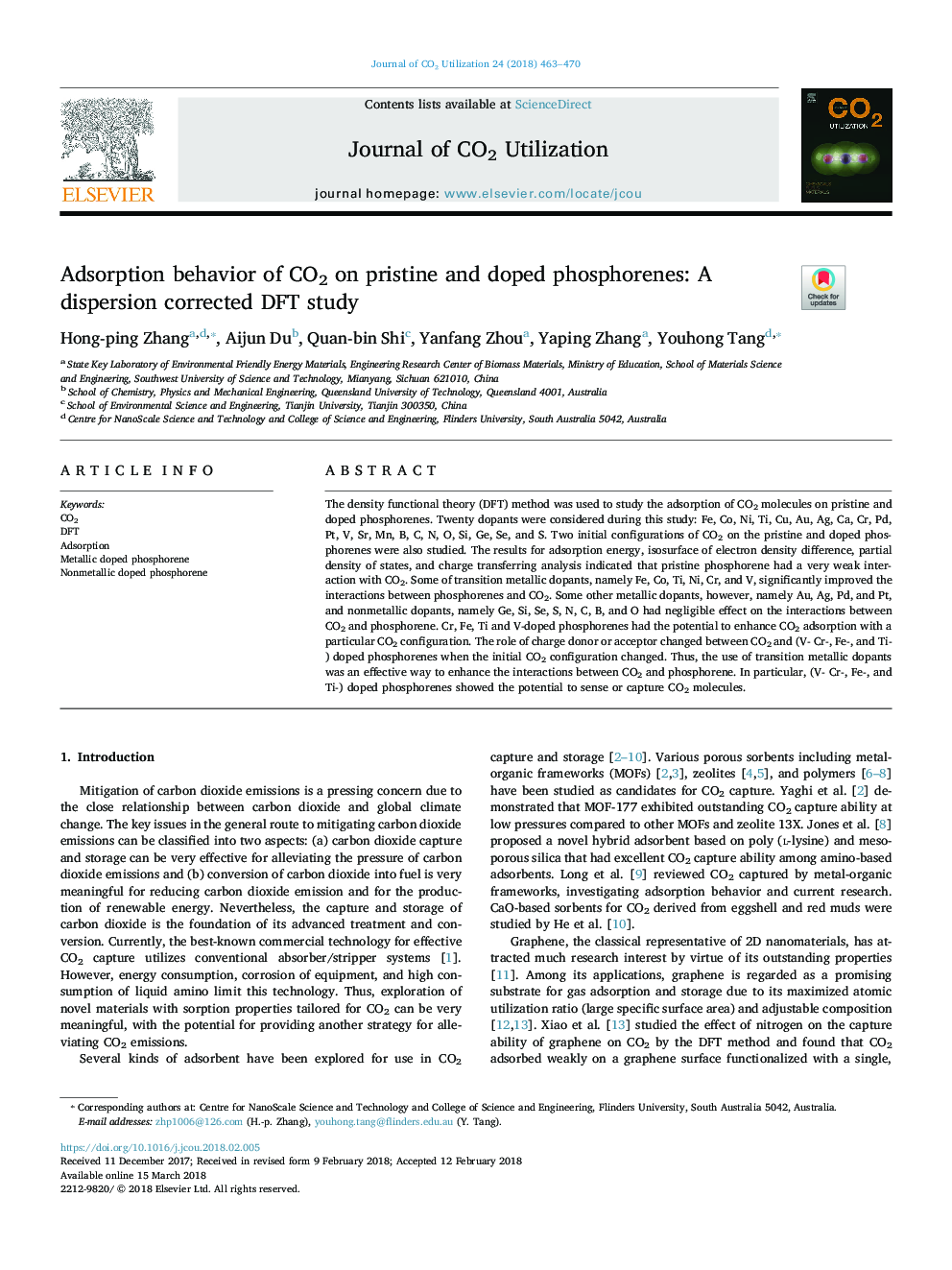| Article ID | Journal | Published Year | Pages | File Type |
|---|---|---|---|---|
| 6528883 | Journal of CO2 Utilization | 2018 | 8 Pages |
Abstract
The density functional theory (DFT) method was used to study the adsorption of CO2 molecules on pristine and doped phosphorenes. Twenty dopants were considered during this study: Fe, Co, Ni, Ti, Cu, Au, Ag, Ca, Cr, Pd, Pt, V, Sr, Mn, B, C, N, O, Si, Ge, Se, and S. Two initial configurations of CO2 on the pristine and doped phosphorenes were also studied. The results for adsorption energy, isosurface of electron density difference, partial density of states, and charge transferring analysis indicated that pristine phosphorene had a very weak interaction with CO2. Some of transition metallic dopants, namely Fe, Co, Ti, Ni, Cr, and V, significantly improved the interactions between phosphorenes and CO2. Some other metallic dopants, however, namely Au, Ag, Pd, and Pt, and nonmetallic dopants, namely Ge, Si, Se, S, N, C, B, and O had negligible effect on the interactions between CO2 and phosphorene. Cr, Fe, Ti and V-doped phosphorenes had the potential to enhance CO2 adsorption with a particular CO2 configuration. The role of charge donor or acceptor changed between CO2 and (V- Cr-, Fe-, and Ti-) doped phosphorenes when the initial CO2 configuration changed. Thus, the use of transition metallic dopants was an effective way to enhance the interactions between CO2 and phosphorene. In particular, (V- Cr-, Fe-, and Ti-) doped phosphorenes showed the potential to sense or capture CO2 molecules.
Keywords
Related Topics
Physical Sciences and Engineering
Chemical Engineering
Catalysis
Authors
Hong-ping Zhang, Aijun Du, Quan-bin Shi, Yanfang Zhou, Yaping Zhang, Youhong Tang,
